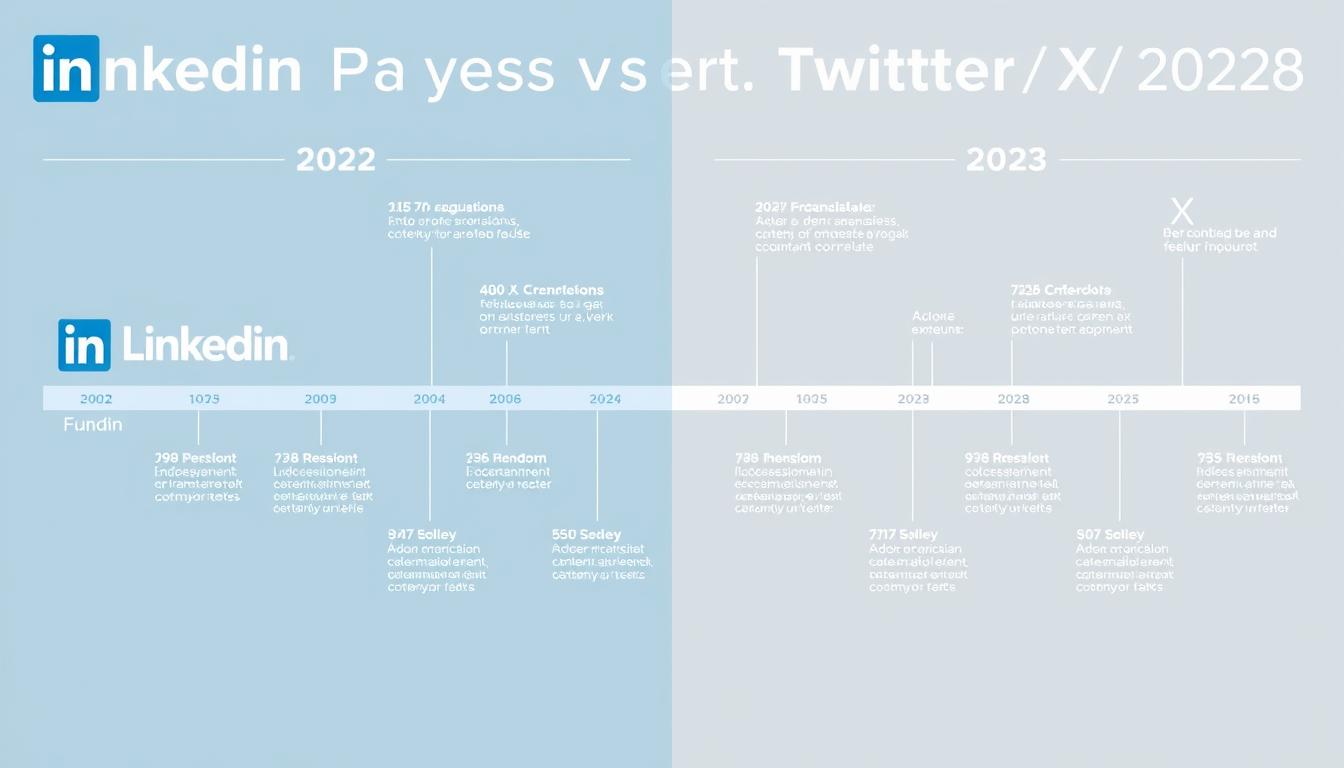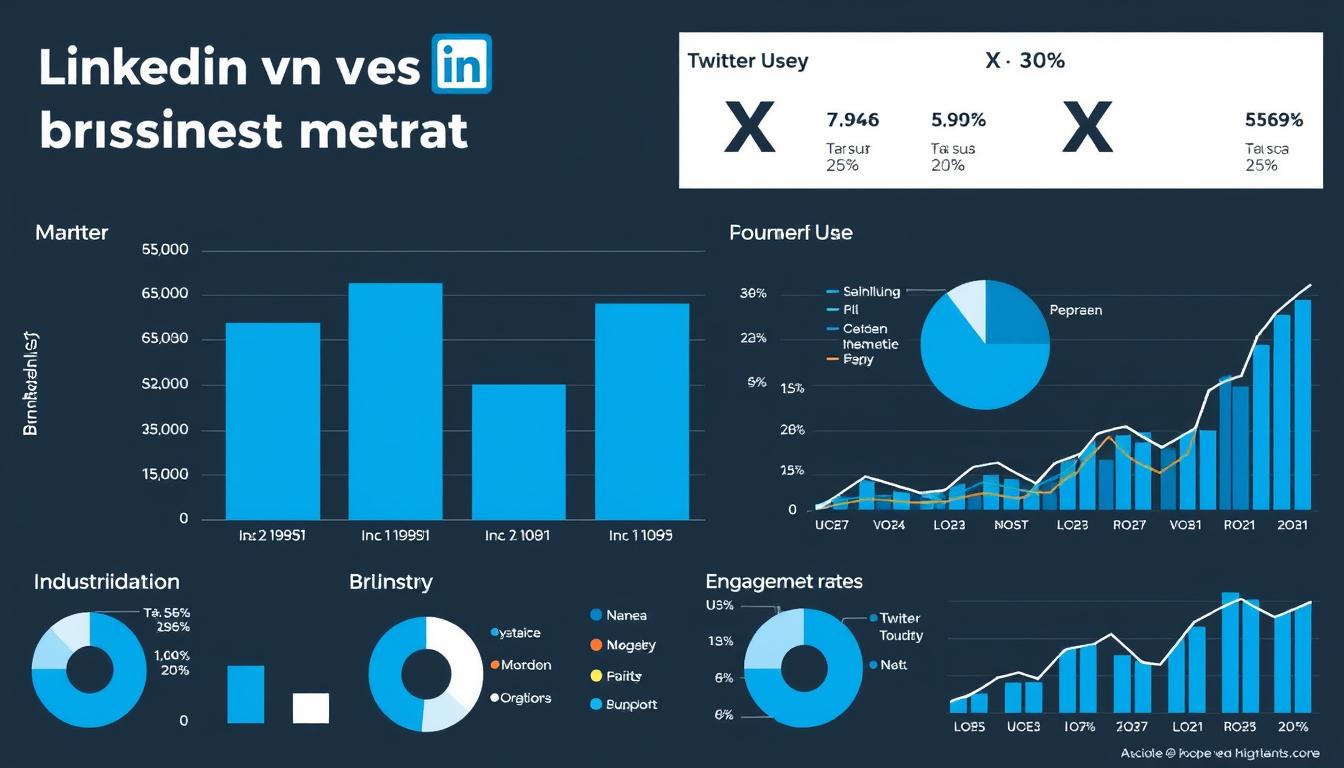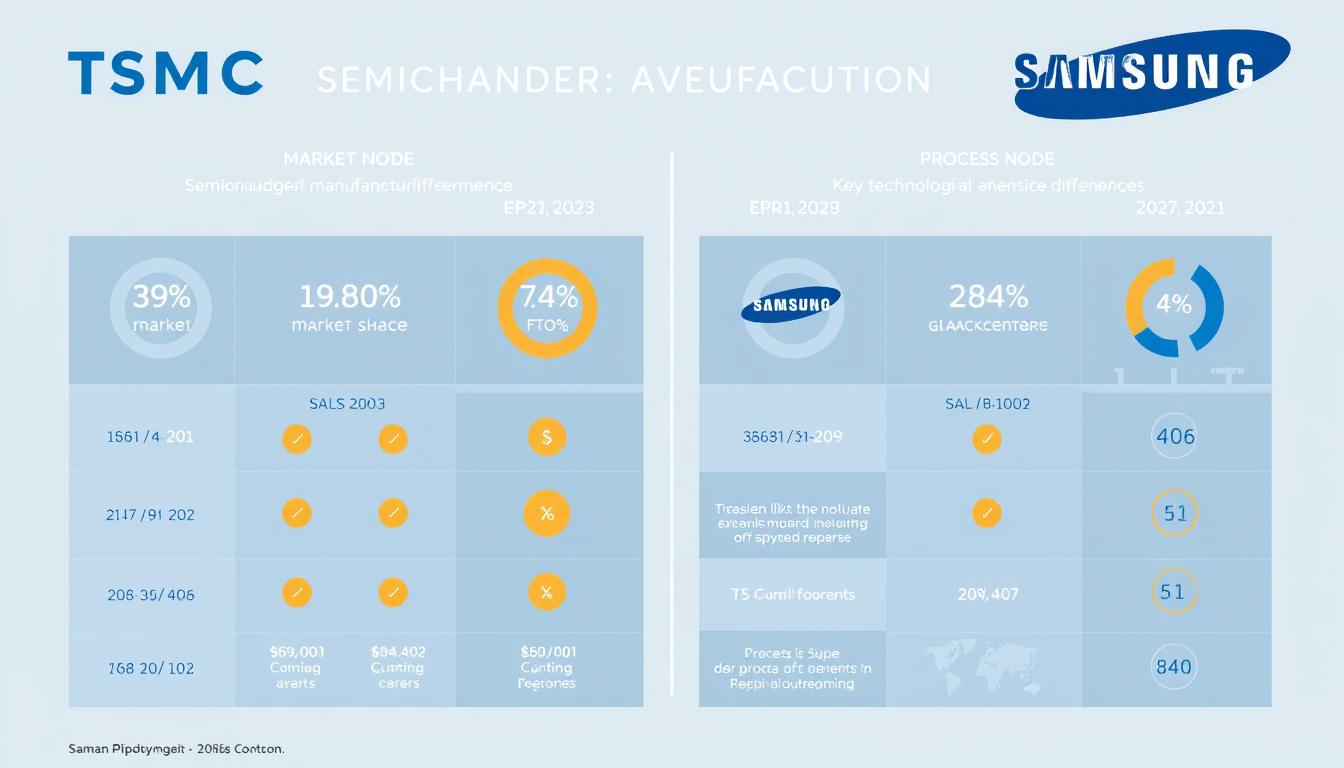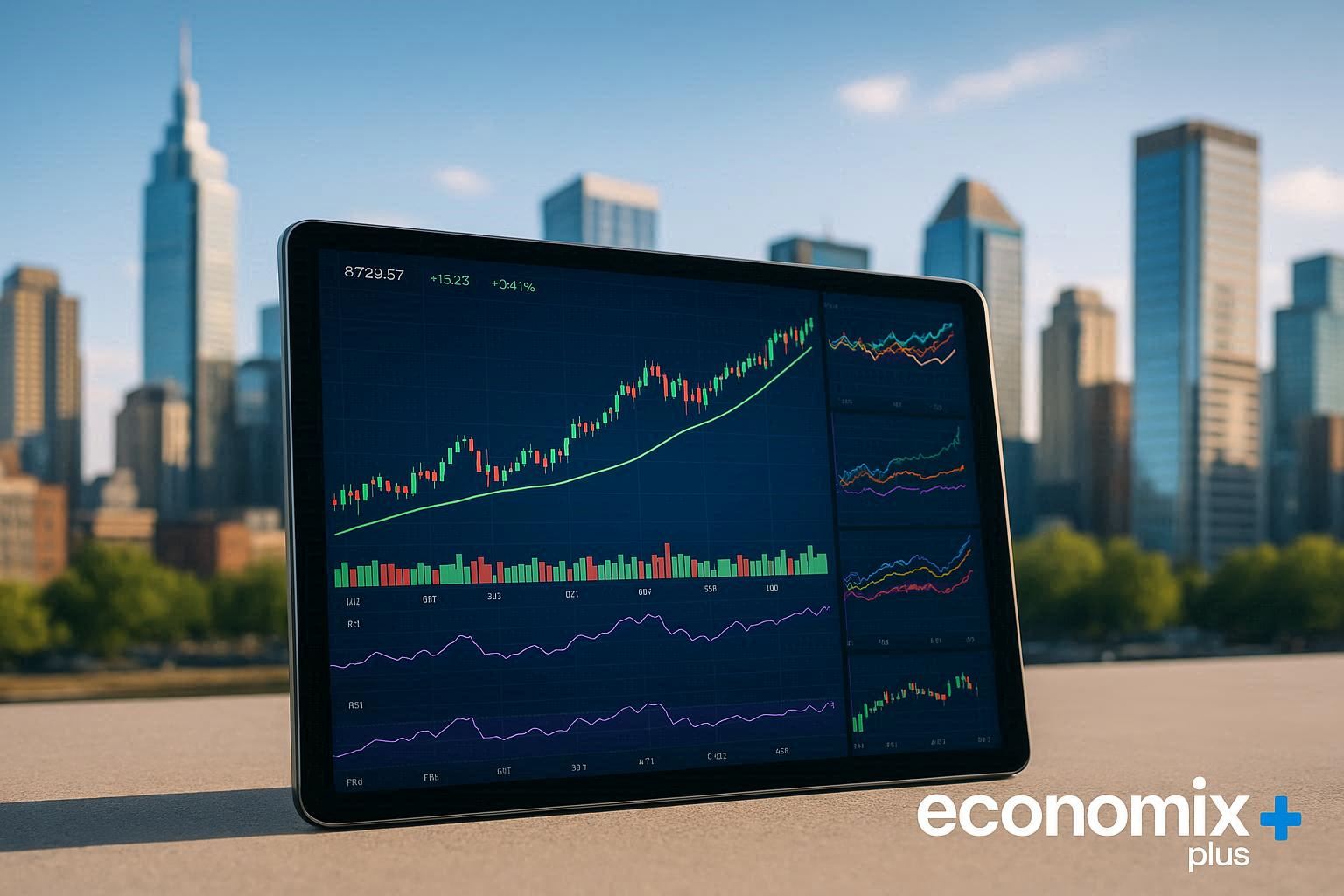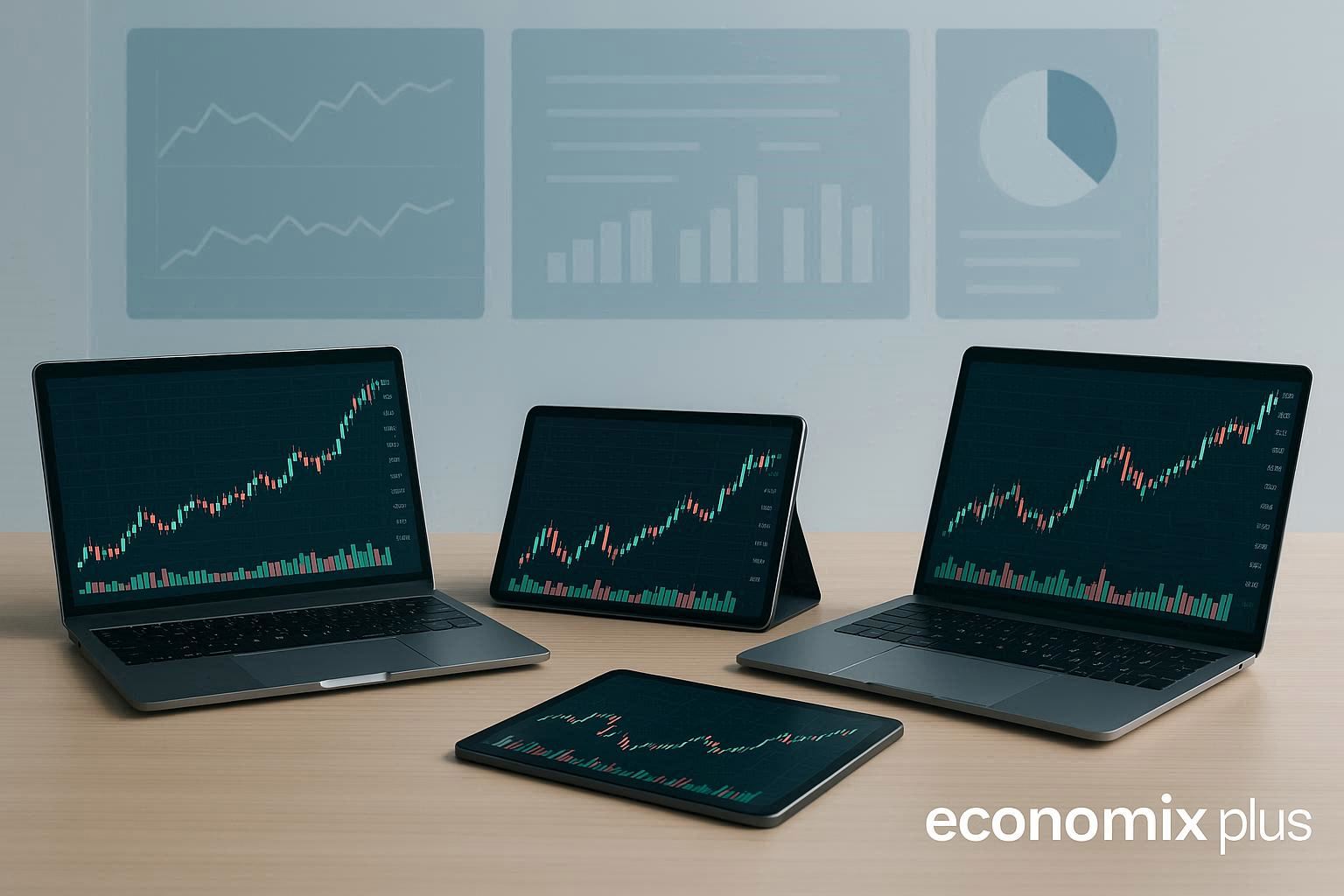In today’s digital landscape, professional networking and business communications have become essential components of corporate strategy. Two platforms stand at the forefront of this space: LinkedIn, the established professional networking giant, and X (formerly Twitter), the real-time communication platform evolving under Elon Musk’s leadership. Both offer distinct approaches to connecting professionals and businesses, but which one truly delivers superior value in the business market?
This analysis examines both platforms across ten key criteria to provide business strategists, marketers, and communication professionals with the insights needed to make informed decisions about where to focus their efforts. We’ll explore everything from core services and user demographics to innovation trajectories and future challenges, offering a comprehensive view of how these platforms serve business needs in 2025.
Company Background and Evolution
LinkedIn was founded in 2002 by Reid Hoffman and launched in May 2003 with a clear mission: to connect the world’s professionals. The platform steadily grew its user base by focusing exclusively on professional networking, career development, and business relationships. In 2016, Microsoft acquired LinkedIn for $26.2 billion, integrating it into its cloud and productivity ecosystem while maintaining its distinct identity and leadership team.
Under Microsoft’s ownership, LinkedIn has expanded its services beyond networking to include robust content publishing, learning resources through LinkedIn Learning (formerly Lynda.com), and enhanced recruitment tools. Today, LinkedIn operates under CEO Ryan Roslansky, who has maintained the platform’s professional focus while expanding its capabilities for business users.
X began its journey as Twitter in 2006, founded by Jack Dorsey, Biz Stone, and Evan Williams. Initially designed for short-form public messaging, Twitter evolved into a real-time news and conversation platform. The company went public in 2013 and experienced periods of both growth and stagnation under various leadership teams.
The most significant transformation came in October 2022 when Elon Musk acquired Twitter for approximately $44 billion and began a radical restructuring. In July 2023, Musk rebranded the platform as “X,” signaling his vision to transform it into an “everything app” with expanded business features, payment capabilities, and communication tools beyond its original microblogging format.
Core Services and Business Use Cases
LinkedIn’s Professional Ecosystem
LinkedIn has built its platform around professional identity and career development. Its core services include comprehensive professional profiles that serve as digital resumes, a robust job marketplace connecting employers with candidates, and industry-specific networking opportunities.
For businesses, LinkedIn offers several key functionalities:
- Company Pages that serve as official business profiles
- Targeted B2B marketing through LinkedIn Ads
- Sales intelligence via Sales Navigator
- Talent acquisition through Recruiter
- Professional knowledge sharing via Articles and Newsletters
- Industry-specific Groups for networking
These services make LinkedIn particularly valuable for B2B marketing, executive recruitment, thought leadership development, and professional networking. The platform excels at facilitating longer-form business discussions and relationship building over time.
X’s Real-Time Business Engagement
X has evolved from Twitter’s foundation of public, real-time conversations. While maintaining the core functionality of short-form posts (formerly tweets), X has expanded its business capabilities under Musk’s direction.
X’s primary business offerings include:
- Verified business accounts with enhanced visibility
- Spaces for live audio discussions and presentations
- Communities for topic-specific engagement
- X Pro (formerly TweetDeck) for managing business communications
- Advertising solutions with broad demographic targeting
- Real-time trend monitoring and engagement
X excels at real-time brand engagement, customer service interactions, news distribution, and viral marketing campaigns. Its strength lies in immediate, public conversations and rapid information dissemination rather than deep professional networking.
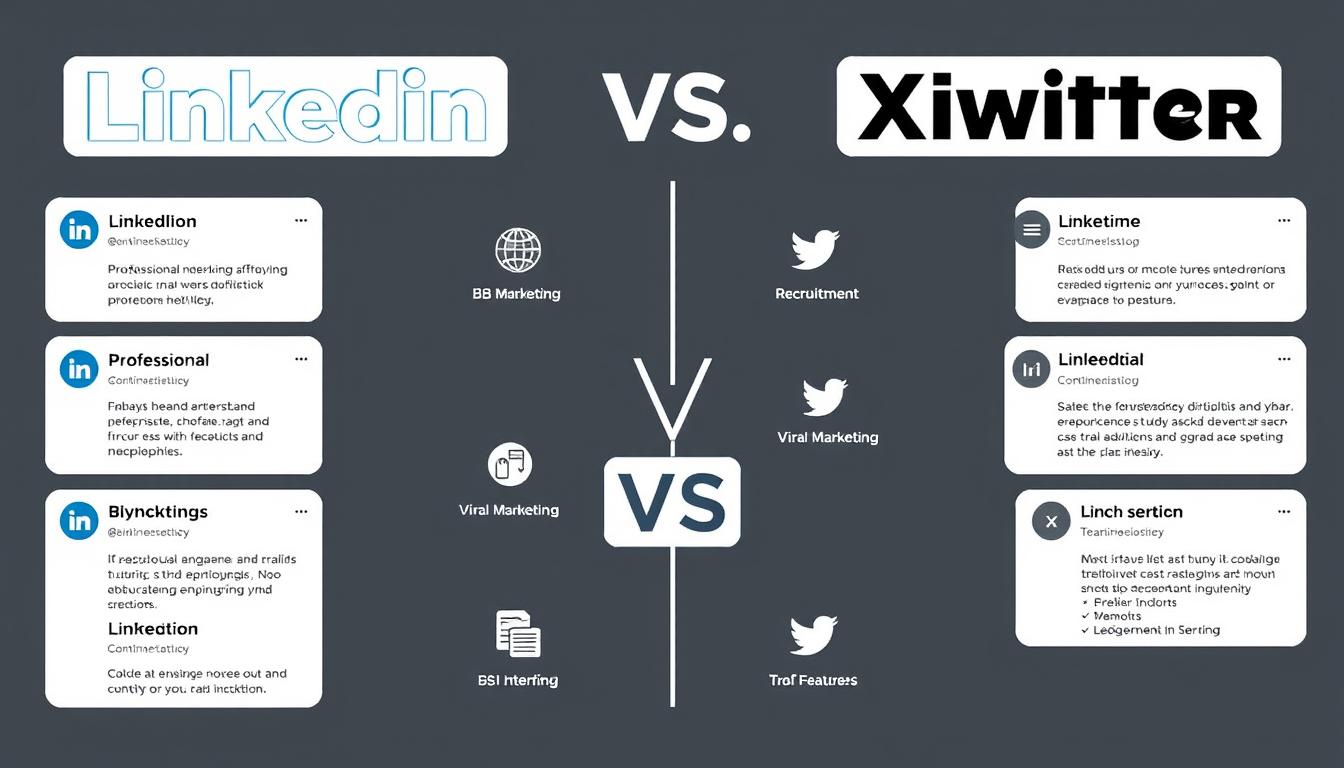
Strengths and Weaknesses Analysis
LinkedIn Strengths
- Professional environment with minimal distractions
- High-quality business content and thought leadership
- Precise targeting for B2B marketing campaigns
- Robust recruitment and talent acquisition tools
- Integration with Microsoft’s business ecosystem
- Strong professional identity verification
- Dedicated spaces for industry-specific discussions
LinkedIn Limitations
- Slower content velocity and engagement
- Higher advertising costs compared to other platforms
- Algorithm limitations for organic reach
- Formal atmosphere can limit authentic engagement
- Limited appeal outside professional contexts
- Less effective for real-time communications
- Content discovery can be challenging
X Strengths
- Exceptional real-time communication capabilities
- Broader audience reach across demographics
- Viral potential for business content
- Direct access to journalists and media
- Effective for trend monitoring and quick responses
- Lower barrier to engagement with decision-makers
- More casual, authentic brand voice opportunities
X Limitations
- Content moderation challenges affecting brand safety
- Short content lifespan due to rapid feed movement
- Less structured professional networking
- Potential for negative brand associations
- Unpredictable platform changes under new ownership
- Limited professional profile information
- Higher noise-to-signal ratio in business communications
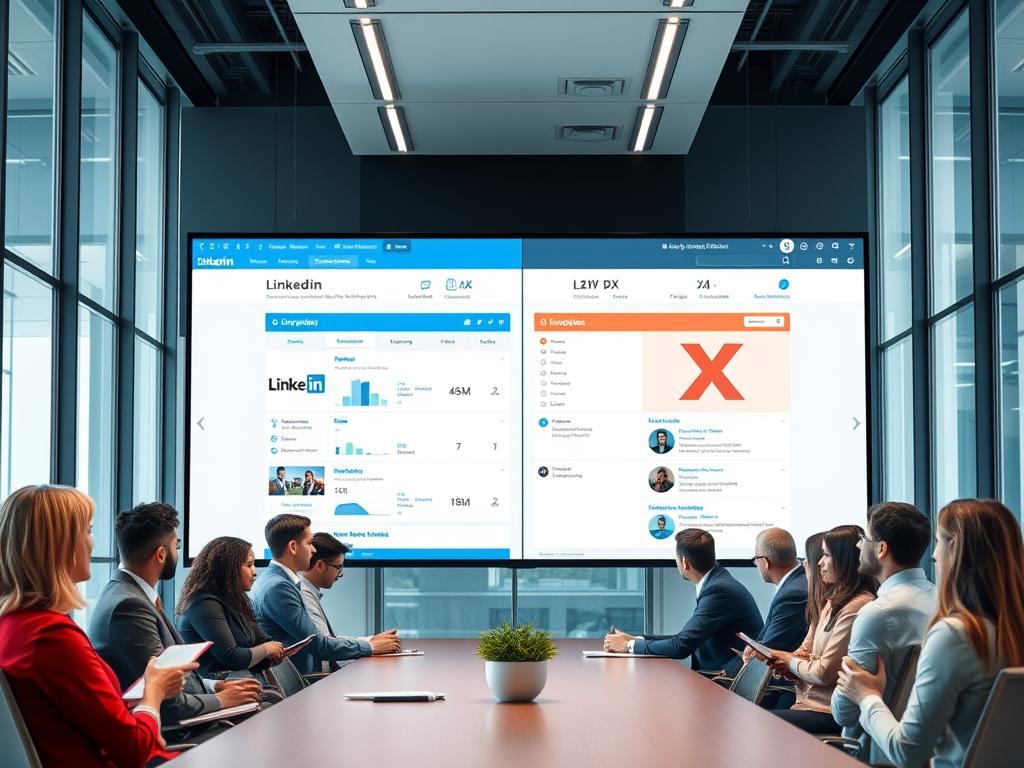
Innovation and Technology
LinkedIn’s Professional Innovation Focus
LinkedIn has concentrated its innovation efforts on enhancing professional connections and business utility. Recent technological advancements include:
AI-Powered Features
- AI-driven job matching that connects candidates with relevant opportunities based on skills and experience
- Smart replies in messaging to facilitate faster business communications
- Content recommendations that surface relevant industry insights
- Automated profile suggestions to improve professional presentation
Business-Focused Tools
- Collaborative Articles that leverage community expertise
- Enhanced analytics for company pages and content performance
- Integration with Microsoft Teams for seamless workflow
- Learning pathways that connect skills development with career opportunities
LinkedIn’s innovation strategy leverages Microsoft’s technological resources while maintaining a laser focus on professional utility. The platform has been particularly successful at implementing AI in ways that enhance rather than replace human connections, creating tools that augment professional relationships rather than automate them away.
X’s Rapid Evolution Under Musk
Since Elon Musk’s acquisition, X has undergone rapid technological transformation aimed at expanding beyond its microblogging roots. Key innovations include:
Platform Expansion
- Enhanced Spaces for live audio discussions with recording capabilities
- Community Notes for collaborative fact-checking and context
- Improved creator monetization tools for business content
- Early-stage payment and commerce functionality
Technical Capabilities
- Grok AI integration for real-time information and assistance
- Expanded character limits for more detailed business communications
- Enhanced media sharing capabilities for marketing content
- Improved algorithmic content distribution for business accounts
X’s innovation approach under Musk has been characterized by rapid deployment and iteration, sometimes at the expense of stability. The platform is evolving toward Musk’s vision of an “everything app” that combines communications, payments, and services, though the business applications of these changes are still developing.

Sustainability and Corporate Responsibility
LinkedIn’s Structured Approach
As part of Microsoft, LinkedIn benefits from a comprehensive corporate responsibility framework that addresses multiple aspects of digital ethics and sustainability:
- Data Privacy: LinkedIn maintains transparent data practices aligned with Microsoft’s privacy principles and global regulations like GDPR and CCPA
- Ethical AI: The platform follows Microsoft’s Responsible AI principles, focusing on fairness, inclusivity, reliability, safety, transparency, and accountability
- Content Standards: LinkedIn’s Professional Community Policies establish clear guidelines for appropriate business communications
- Environmental Impact: The platform benefits from Microsoft’s carbon negative commitment and sustainability initiatives
LinkedIn publishes regular transparency reports detailing content moderation actions, government requests for data, and platform safety measures. This structured approach has helped maintain LinkedIn’s reputation as a trusted environment for business communications.
X’s Evolving Framework
X’s approach to corporate responsibility has undergone significant changes under Musk’s leadership, with mixed implications for business users:
- Content Moderation: Reduced moderation staff and policy changes have created a more open but potentially riskier environment for brand communications
- Free Speech Focus: X emphasizes minimal content restrictions, which appeals to some businesses but concerns others regarding brand safety
- Transparency Efforts: The platform has increased algorithmic transparency but reduced reporting on moderation actions
- Trust & Safety: X has introduced advertiser controls to address brand safety concerns while maintaining its free speech positioning
X’s corporate responsibility approach prioritizes user freedom and algorithmic transparency over comprehensive content governance. This creates both opportunities and challenges for businesses navigating the platform’s evolving standards.
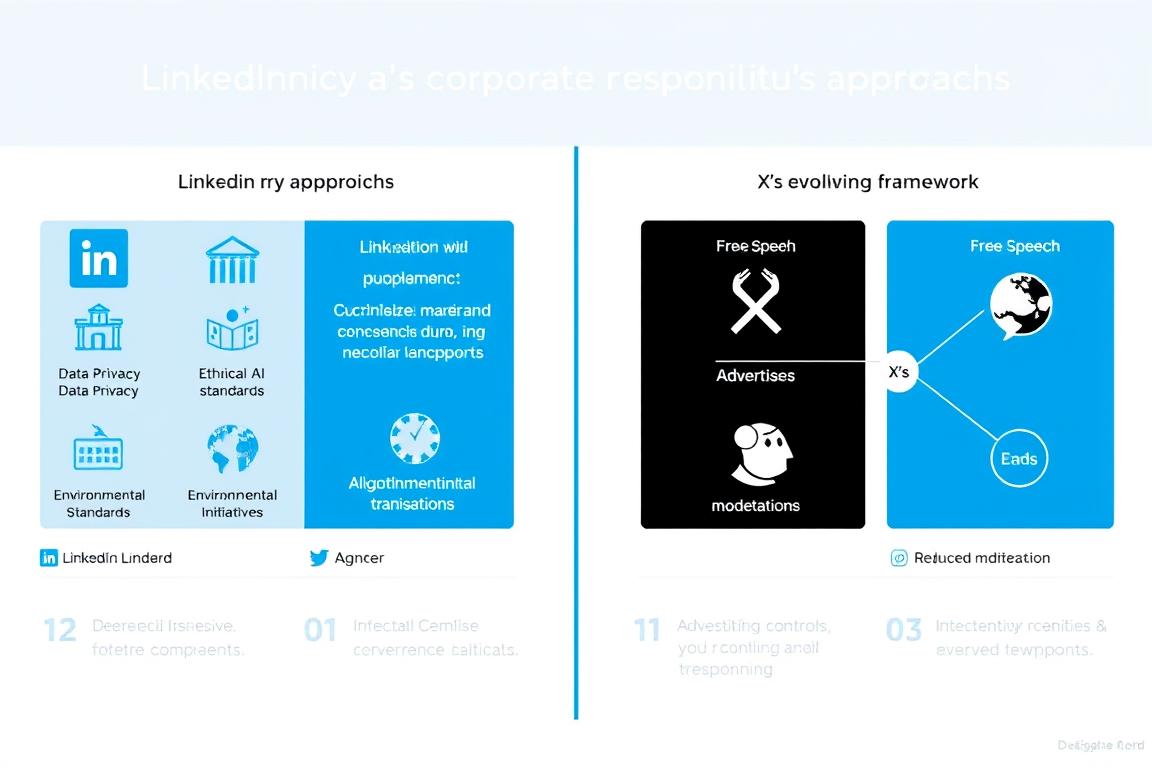
Financial Performance and Growth
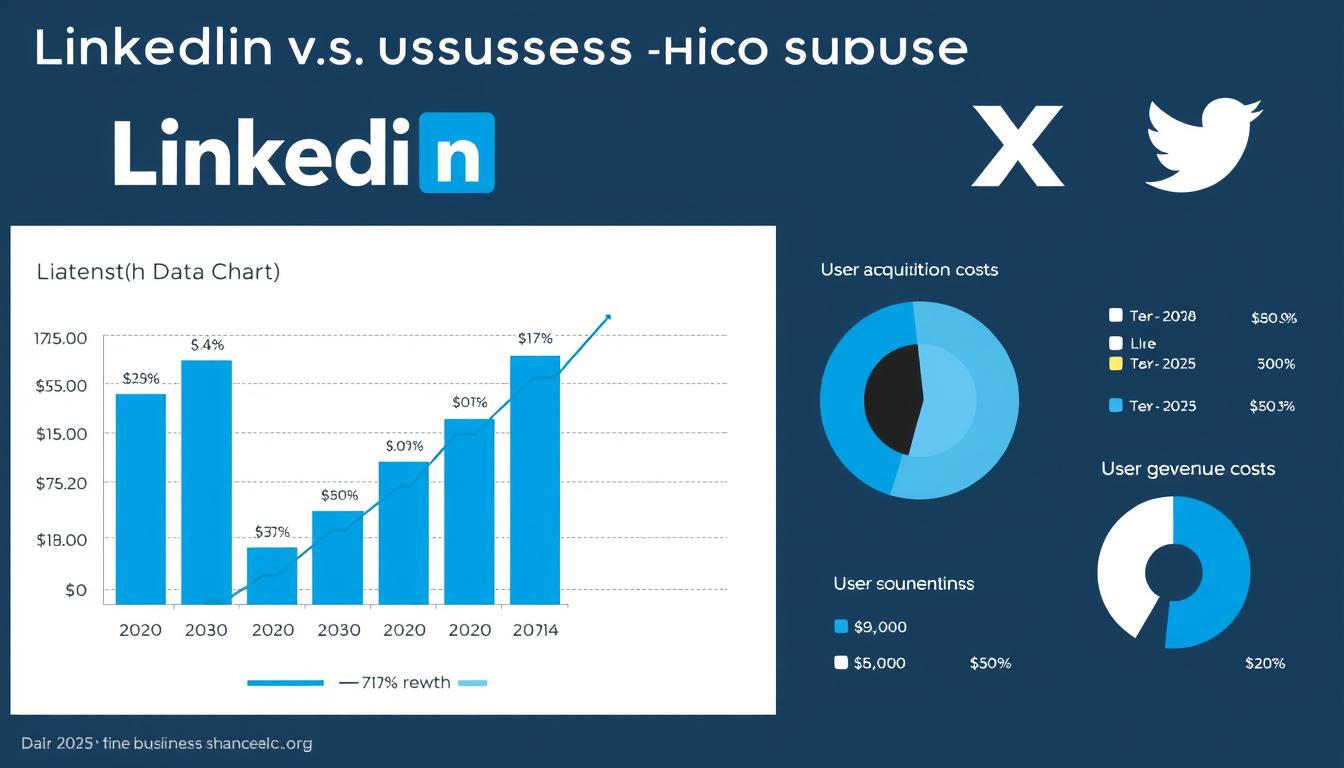
| Financial Metric | X (formerly Twitter) | |
| 2023 Revenue | $15.5 billion (estimated) | $3.4 billion (estimated) |
| Revenue Growth (YoY) | +18% | -28% |
| Primary Revenue Sources | Premium Subscriptions (45%), Advertising (30%), Recruitment Solutions (25%) | Advertising (75%), Subscriptions (20%), Data Licensing (5%) |
| Average Revenue Per User | $16.30 | $6.20 |
| Profitability | Profitable (as reported within Microsoft’s Productivity segment) | Not currently profitable |
LinkedIn’s financial performance has been consistently strong under Microsoft’s ownership. The platform generates revenue through multiple streams, with premium subscriptions and recruitment solutions providing stability that advertising alone cannot. Microsoft doesn’t break out LinkedIn’s specific profitability, but the company has indicated that LinkedIn contributes positively to its overall financial results.
X has faced more financial volatility, particularly following Musk’s acquisition and the subsequent advertiser exodus. The platform has attempted to offset declining advertising revenue through its subscription offering (X Premium, formerly Twitter Blue) and is exploring additional revenue streams like payments and commerce. However, X continues to face challenges in achieving sustainable profitability.
For businesses evaluating these platforms, LinkedIn represents a more stable environment with predictable growth and clear business models. X offers potentially lower costs but with greater uncertainty regarding future pricing and features as the platform continues its transformation.
Brand Reputation and Trust
LinkedIn has cultivated a strong reputation as a trusted professional environment. Business users consistently rate it highly for professional networking, thought leadership development, and B2B marketing. According to recent surveys, LinkedIn is trusted by 55% of decision-makers for professional information, compared to just 15% for X.
LinkedIn’s brand reputation benefits from its consistent focus on professional interactions and Microsoft’s broader corporate credibility. The platform is widely perceived as essential for business networking, with 87% of B2B marketers rating it as their most valuable social media platform for organic reach.
X’s reputation has experienced greater volatility, particularly following Musk’s acquisition and subsequent policy changes. While the platform maintains strong credibility for real-time news and public discourse, its business reputation has suffered from advertiser concerns about brand safety and unpredictable policy shifts.
However, X continues to be valued for its ability to drive public conversation and reach broad audiences quickly. For certain industries—particularly media, entertainment, and consumer technology—X remains an essential channel despite trust challenges.

Global Reach and Localization
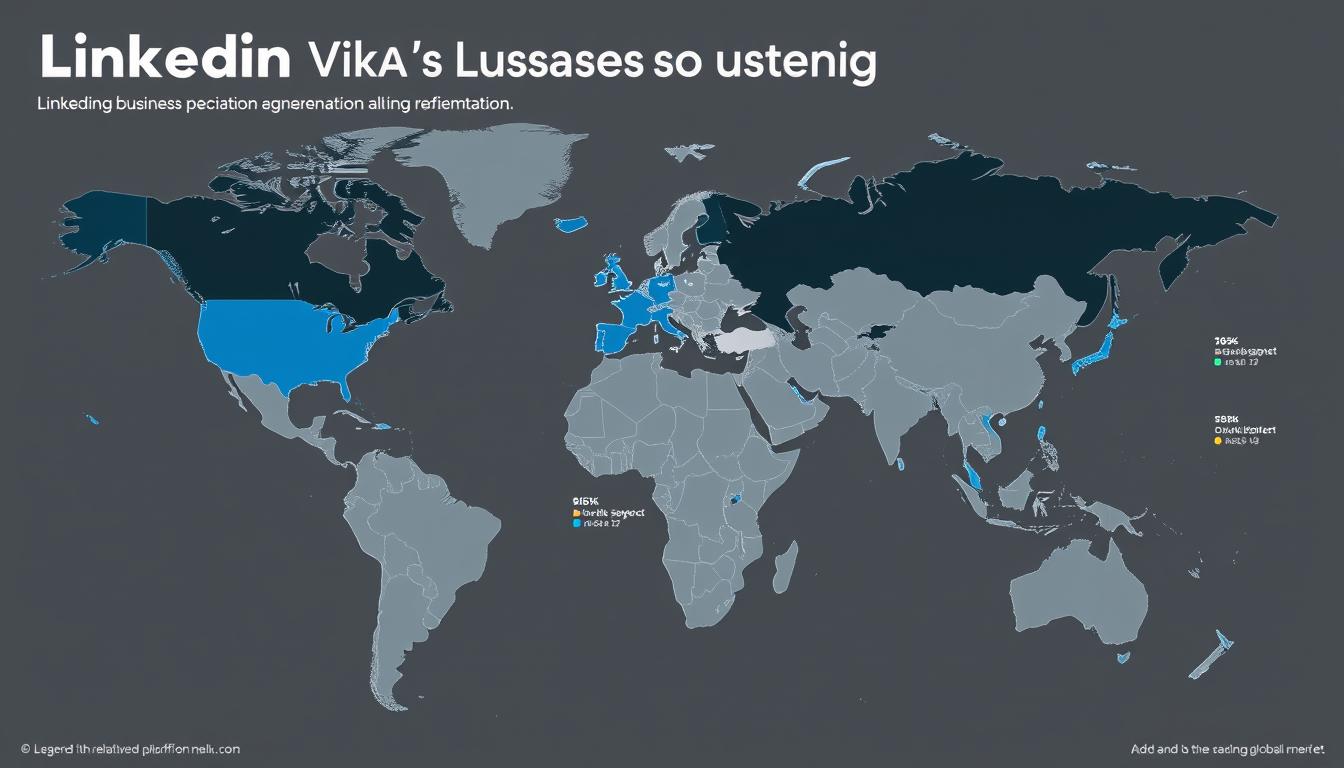
LinkedIn’s Global Business Presence
LinkedIn has established a strong international footprint with availability in over 200 countries and regions, supporting 26 languages. The platform’s global strategy emphasizes localization while maintaining consistent professional standards across markets.
Regional strengths include:
- North America: Highest penetration rate with 65% of professionals actively using the platform
- Europe: Strong presence particularly in the UK, France, and Germany with specialized country managers
- Asia-Pacific: Rapid growth in India (second-largest user base) and expanding influence in Japan and Australia
- Middle East: Growing adoption among business professionals, particularly in UAE and Saudi Arabia
LinkedIn’s localization extends beyond language to include region-specific features, content recommendations, and business practices. The platform has been particularly successful at adapting to different business cultures while maintaining its professional focus.
X’s International Approach
X maintains a presence in approximately 180 countries and supports 34 languages, giving it slightly broader linguistic reach than LinkedIn. The platform’s international strategy has historically emphasized real-time global conversation rather than market-specific adaptation.
Regional characteristics include:
- North America: Largest user base with strong penetration across industries
- Japan: One of X’s strongest markets with high business adoption
- Brazil: Significant user base with active business participation
- UK & Western Europe: Strong presence but facing increased regulatory scrutiny
X’s approach to localization has been less structured than LinkedIn’s, relying more on user communities to drive regional adaptation. This has created both challenges and opportunities for businesses operating across multiple markets.
For multinational businesses, LinkedIn offers more consistent experiences across markets but may lack the cultural nuance of X in certain regions. X provides greater linguistic diversity but with less predictable business environments across different countries. Companies with global operations often maintain presences on both platforms, leveraging LinkedIn for structured professional engagement and X for market-specific conversations and trend monitoring.
Challenges and Future Outlook
“The future of business communications will be shaped by platforms that can balance professional utility with authentic engagement. Both LinkedIn and X face the challenge of evolving without losing their core strengths in an increasingly competitive landscape.”
LinkedIn’s Path Forward
LinkedIn faces several significant challenges as it continues to evolve its business offerings:
- Platform Saturation: With high penetration among professionals in developed markets, LinkedIn must find new growth avenues
- Content Engagement: Maintaining quality while increasing user time spent on platform
- Competition from Niche Platforms: Specialized professional networks like Fishbowl and industry-specific platforms
- AI Integration: Balancing automation with authentic human connection
- Subscription Fatigue: Justifying premium costs in an increasingly crowded subscription economy
LinkedIn’s future strategy appears focused on deeper Microsoft ecosystem integration, expanded learning and skills development offerings, and enhanced AI-powered networking tools. The platform is likely to maintain its professional focus while expanding into adjacent areas like freelance marketplaces and professional services.
X’s Transformation Challenges
X faces a different set of challenges as it attempts to redefine itself under Musk’s vision:
- Advertiser Confidence: Rebuilding trust with major brands following content moderation changes
- Platform Identity: Clarifying its value proposition as it expands beyond microblogging
- Monetization Balance: Finding sustainable revenue models without alienating users
- Regulatory Pressure: Navigating increasing global scrutiny of social media platforms
- Feature Coherence: Integrating new capabilities without compromising user experience
X’s future direction appears to be toward Musk’s “everything app” vision, potentially incorporating payments, expanded commerce, and additional communication modalities. For business users, this evolution presents both opportunities for new engagement models and challenges in maintaining brand consistency.
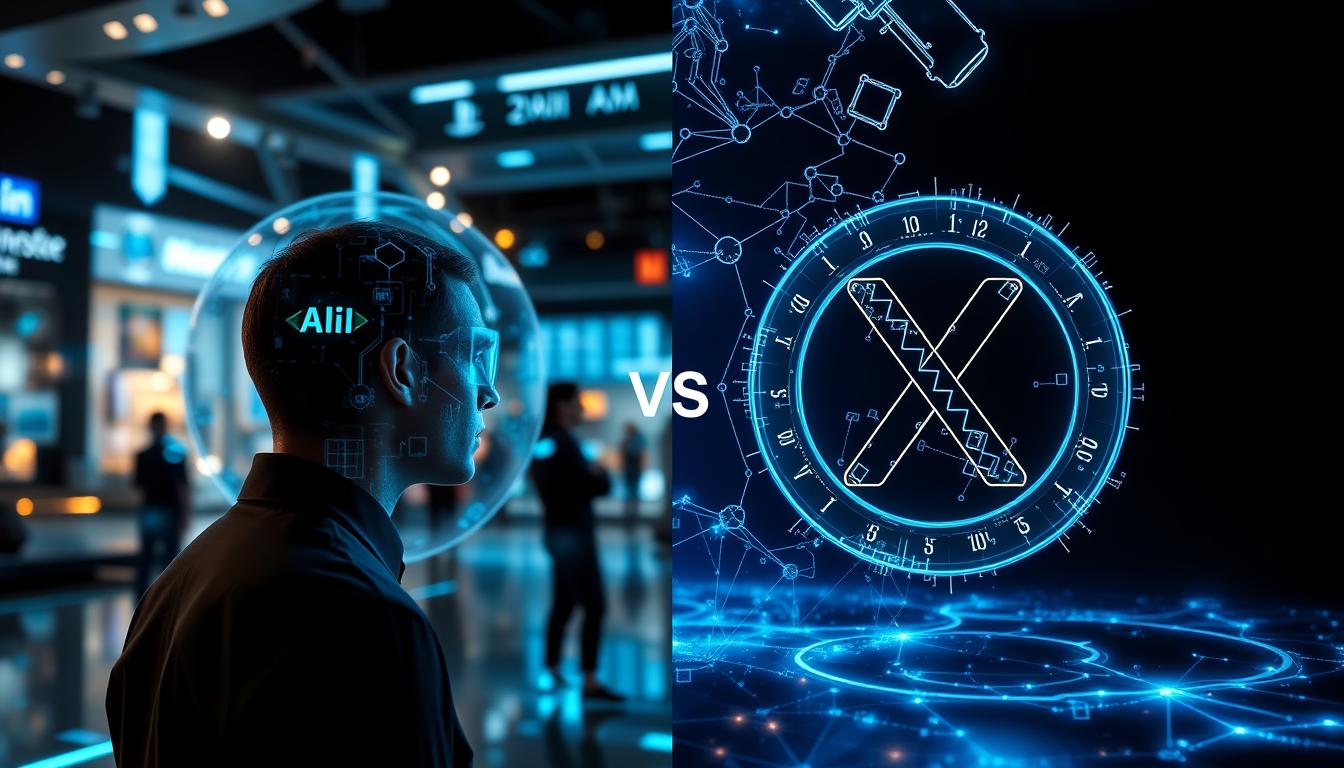
Conclusion: Choosing the Right Platform for Your Business Needs
The comparison between LinkedIn and X reveals two platforms with distinct approaches to serving the business market. LinkedIn excels as a dedicated professional environment with structured networking, robust B2B marketing capabilities, and strong integration with business workflows. Its strengths in talent acquisition, thought leadership development, and professional community building make it particularly valuable for industries where depth of relationship matters more than breadth of reach.
X offers businesses a different value proposition centered on real-time engagement, broad audience reach, and viral potential. Its strengths in public conversation, trend monitoring, and immediate communication make it well-suited for industries where speed, public perception, and cultural relevance are paramount concerns.
Rather than viewing these platforms as competitors, forward-thinking businesses increasingly see them as complementary tools serving different aspects of their communication needs. LinkedIn provides the foundation for professional identity and relationship building, while X offers opportunities for timely engagement and broader visibility.
As both platforms continue to evolve—LinkedIn deepening its professional capabilities and X expanding toward Musk’s “everything app” vision—businesses will need to continuously reassess their digital strategies. The most successful approaches will likely involve thoughtful presence on both platforms, with resource allocation and content strategies tailored to each platform’s unique strengths and the specific business objectives they best serve.
